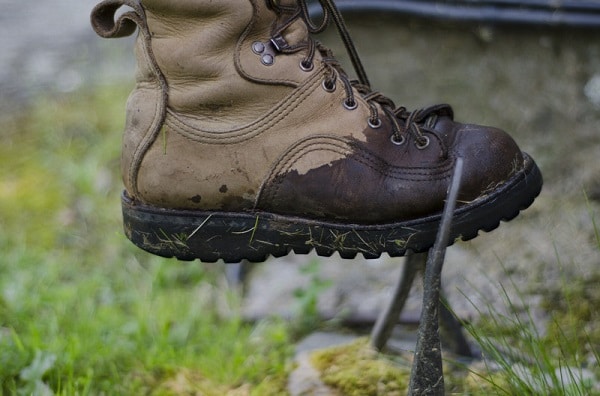Estimated reading time: 4 minutes
This article on wet weather footwear is brought to you by Finchley dog walker and is part of our dog walking footwear and clothing series.

As a scout leader and a dog walker, I probably spend 75 percent of the year in walking shoes or boots. As you can imagine being a scout leader for over 30 years and a dog walker for over 10, I have learnt a lot about walking boots, waterproofs, layering up, and mor
Top Tip Don’t try new shoes on in the morning. The reason being is by the afternoon, there is a good chance your foot may have swollen slightly. This can then make them sure feel more uncomfortable and rub more. Wear your thick walking socks *or take them with you) when you try the but on Consider the sole The Vibram sole is tough, slip-resistant and very durable, A sole trusted by many boot makers, including Meryl. The best way to check if they fit is to take out the insole, Place it on the floor, and place your foot on top so you can easily. The ideal fit is the gap about the size of your fingertip between your big toe and the end of the sole Replace the sole and try the boot on laced up;
- The tongue of the shoe shouldn’t feel uncomfortable. Walk around the shop to see how they think. Do they have a slope you can try For the first days, only wear them at home on the carpet. This will help break them in, and you can take them back for an exchange if they still feel uncomfortable
Footwear to cope with the season.
Trainers
Many dog owners and walkers choose trainers as their walking shoes, and a good pair can do a good job in summary. They offer lightweight comfort as well as a good grip.
However, that grip is not usually up to the rigours of ice, and they’re simply no defence against ankle-deep mud or drifting sn . Save them for the spring – or the gym.
Wellington Boots
Traditional rubber wellington boots can be a better option – a hardy tread and longer length to protect against those deeper-than-expected muddy puddles. Readily available and often inexpensive.
Some of the newer types of boots contain neoprene and a better so. These boots, such as Joules or Hunter, come in different styles and colours. Despite some of the pictures on the internet, these boots are no good in snow and ice.
However, unless you spend a little more on lined ones or two pairs of purpose-made ‘welly socks’, they don’t offer much protection against the co . Cheap ones don’t usually last very long either…
Walking boots for wet weather walking
These are my no one recommendation.
You may already have a decent pair of walking boots if you’re into long hike-type walks in the countryside.
Hiking boots make the ideal wet weather footwear as they are fairly robust, offer ankle support and a cope-with-any-terrain grip which should ensure you stay upright on even the thickest of mud and ice – however, they’re not overly helpful in knee-deep mud.
Whilst hiking boots can take a lot of weather before they get wet, it is still possible. We have written an article on drying out walking boots.
Related article How to take care of Hiking Boots
An option to cover all bases for wet weather footwear
So, you could buy all of the above and rotate accordingly, or look at Country boots – or in equestrian circles, ‘yard boots‘ – which can combine the best of all worlds. Knee-length, waterproof, comfy enough for walking an entire cross-country course and with as good a grip as a dedicated walking boot, these will keep you warm and vertical – invest in a good quality pair, and they will last you several winters, too.
You may also be interested in.

